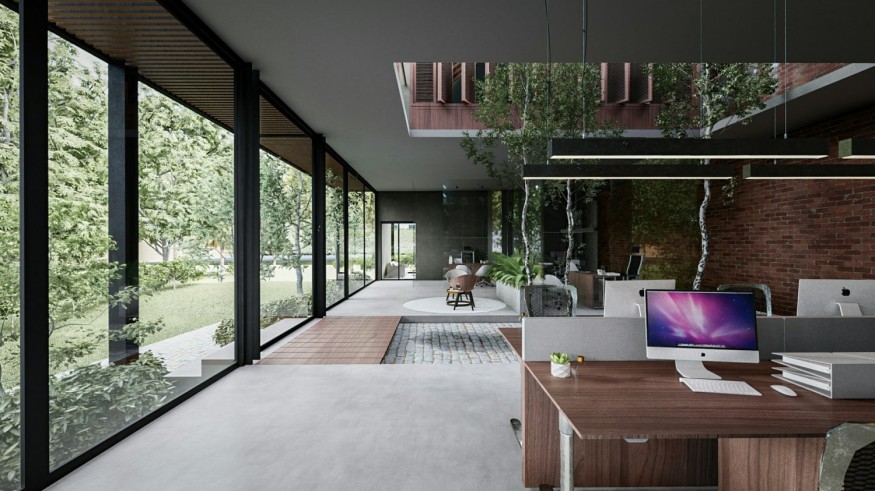
Customers say they give sustainability practices top priority more and more. They favor products, brands, and companies that demonstrate environmental care.
Relocating a business presents a unique opportunity to adopt more sustainable practices during the move and afterward. Here is a guide to some of those practices.
Reducing Waste
Excess waste has many adverse environmental effects, including water and soil contamination, increased greenhouse emissions, resource depletion, and harm to animals and plants. Reducing waste during an office relocation is an excellent way to help the environment.
Businesses can reduce waste by finding ways to donate furniture and equipment they no longer want. Equipment that seems obsolete to a business may be perfect for a charity or other nonprofit. Companies in third-world countries may be able to use assets that Western companies consider obsolete. Assets that no longer have any value can be recycled.
Lowering Carbon Emissions
Transporting furniture and equipment to a new location can increase carbon emissions, which trap heat in the atmosphere and contribute to global warming. However, careful planning can lower the carbon footprint while transporting goods. For example, companies can choose logistics companies that use hybrid and electric vehicles rather than those powered by fossil fuels. They can also ask potential transportation companies about vehicle service schedules because frequent servicing improves efficiency. Finally, businesses should sort, recycle, sell, or give away items they no longer need before relocating. Lighter loads consume less fuel.
Using Sustainable Packing Materials
Eco-friendly packing materials also lower the carbon footprint. Biodegradable, recycled, or reusable materials are earth-conscious choices.
Reusable Plastic Bins
Plastic bins are affordable alternatives to cardboard boxes. They can be reused for storage after the move; some collapse for storage. They are also more durable and weather-resistant than boxes.
Biodegradable Peanuts and Bubble Wrap
Styrofoam peanuts and plastic bubble wrap are environmental hazards because they will not break down in landfills. Styrofoam peanuts also absorb dangerous chemicals and pose a hazard to animals.
However, both peanuts and bubble wrap can be made from sustainable materials. Peanuts made with starch-based materials disintegrate when placed under running water. They are also compostable. Enviro-bubble is one example of sustainable bubble wrap.
Paper Tape
Paper tape made from recycled materials is easier to see and more easily breaks down than plastic tape. It is also generally free from harmful chemicals and can be further recycled.
Choosing Energy-Efficient Systems
A new office provides an excellent opportunity to install more energy-efficient systems.
- Better insulation can reduce costs, save energy, and reduce noise.
- LED lighting can save over traditional bulbs.
- Heat recovery ventilators use outgoing air to heat incoming air, thus saving energy costs and consumption.
- Effective use of natural lighting can save energy and improve worker satisfaction and productivity.
- An asset management system can optimize space and avoid using space for unused assets.
Incorporating Green Building Practices
Companies can also be more environmentally friendly by using green building practices in their new office space.
Renewable Energy Sources
Using renewable energy helps combat climate change, lessens dependency on fossil fuels, and improves air quality. Many renewable energy sources are also competitively priced with traditional energy sources. Solar, wind, and hydropower are examples of renewable energy sources for offices.
Water Conservation
Water-saving fixtures can save money by lowering water usage and reducing a company's carbon footprint. For example, faucets with aerators can reduce water consumption while being functional. Smart water meters can identify leaks, and irrigation systems with rain sensors can adjust based on rainfall to prevent unnecessary watering.
Green Roof
A green roof is fully or partially covered with vegetation. It is environmentally friendly because it reduces energy consumption, absorbs rainwater, and provides a habitat for small animals and insects. It also absorbs pollution from the air, improving overall air quality. It also can be aesthetically pleasing, especially in an urban area.
Energy-Efficient Appliances
Low-consumption appliances can also help a company achieve sustainability goals.
Environmentally Friendly Cleaning Products
Eco-friendly products contain no chlorine, additives, harmful chemicals, or artificial fragrances and come in recyclable packaging. They are cost-competitive and effective when compared with traditional products.
Green Building Materials
Building with quality, long-lasting materials is a sustainable practice because if materials last longer, companies will have less waste. Using green building materials can also save money through energy savings and low maintenance. Many durable materials also have other eco-friendly features. For example, stone is durable, low-maintenance, and contains no toxins.
Indoor Air Quality
Healthy indoor air quality improves client satisfaction, employee engagement, and functioning and reduces maintenance costs. Improved ventilation, a well-maintained HVAC system with a high MERV rating, efficient trash disposal, and humidity control are ways to enhance indoor air quality.
Key Takeaways
- The sustainable decommissioning of old assets and office space is part of an eco-friendly office relocation.
- Using a logistics company specializing in environmentally friendly transportation practices can lower a company's carbon footprint.
- Avoiding Styrofoam peanuts and plastic bubble wrap in favor of sustainable materials helps the environment.
- Companies building or renovating new offices can incorporate green building practices and energy-efficient systems.
- Setting and achieving sustainability goals throughout an office relocation can be profitable. Increasingly, customers prefer brands that have environmentally friendly practices.
© 2025 NatureWorldNews.com All rights reserved. Do not reproduce without permission.





